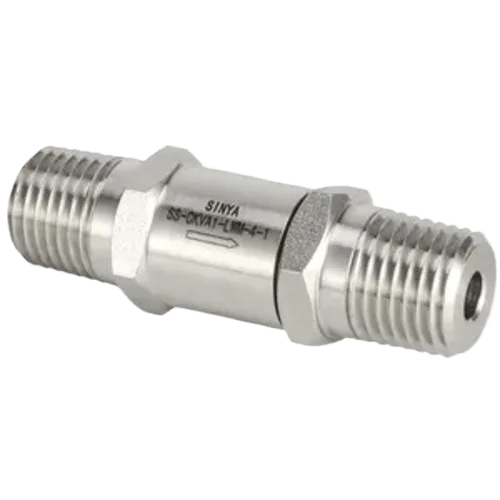Poppet Check Valve
A poppet check valve uses a disc, typically attached to a stem or sleeve, as its main mechanism to control flow. A spring often assists in closing the valve before the fluid reverses direction, helping to reduce the risk of hydraulic shock, commonly known as water hammer.
Description
A poppet check valve plays a crucial role in fluid and gas systems by allowing flow in one direction and blocking any reverse movement. It prevents backflow, maintains optimal performance, and protects system integrity. Industries such as oil and gas, chemical processing, water treatment, and HVAC rely on these valves for accurate flow control and pressure regulation.
Benefits of Poppet Check Valve
- Prevents Backflow: The poppet check valve’s primary function is to stop reverse flow, preventing damage to pumps, compressors, and other equipment.
- Simple, Reliable Operation: These valves operate automatically, offering reliability without the need for external controls.
- Improves System Efficiency: By ensuring one-way flow, the valve helps maintain pressure and prevents flow disruptions, enhancing overall system efficiency.
- Durability and Cost-Effectiveness: Poppet check valves last longer and require minimal maintenance, offering both durability and cost-effectiveness for industries.
- Versatility: These valves handle a wide range of fluid types, including water, oil, and gases, making them suitable for various applications.
Applications of Poppet Check Valve
Engineers commonly install poppet check valves in pumps, compressors, pipelines, and pressurized systems. In water treatment facilities, they stop contaminated water from flowing back into the clean water system. In HVAC systems, they regulate pressure, and in the oil and gas industry, they protect equipment from damage caused by reverse flow.
To sum up, poppet check valve ensure reliable flow control by allowing one-way movement and stopping reverse flow. They help maintain safe and efficient operation in critical systems across various industries.





